When trying to call grid.arrange to put multiple plots on a same ggplot2 graph, I first build a list of the plots I want. Then I build the corresponding argument list to call grid.arrange, as was explained in a previous question. This is my code (my dataframe is called manip):
args.list <- NULL;
plot.list <- NULL;
for (m in names(manip[2:10])) {
plot.list <- c(plot.list, list(qplot(manip$side, y=manip[,m],ylab=m))
}
args.list <- c(plot.list, 1, 9)
names(args.list) <- c(names(manip)[2:10], list("nrow","ncol"))
do.call(grid.arrange, args.list)
This works, except that the 9 graphs are exactly the same! After checking, it turns out that the data is always the one corresponding to m=10. So my guess was that the value of m is not assigned in the loop, but evaluated later. However, the label ylab=m is assigned correctly and is different for all the graphs.
So I don't really get what the difference is and how the interpreter chooses when to evaluate m for the plots. Can someone explain?


